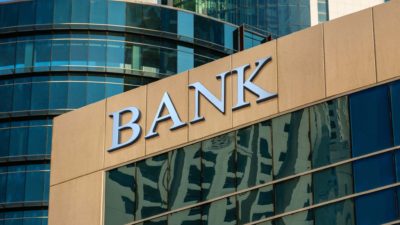1) The Commonwealth Bank of Australia (ASX: CBA) share price has fallen 1% to around $100 after the banking giant reported cash profits growth of 11% and a full year fully franked dividend up 10% to $3.85 per share.
Volume growth was especially impressive, with double-digit gains in household and business deposits. Net interest margin, a measure of profitability, fell to 1.90%, but CBA expects it to increase in a rising interest rate environment.
Looking ahead, CEO Matt Comyn expects consumer demand to moderate as cost of living pressures increase, saying it's a "challenging time."
With the CBA share price trading at $100, CBA shares trade on a price-to-earnings ratio (P/E) of 18 times and a fully franked dividend yield of 3.85%.
Down just 5% in the past 12 months, CBA shares have been a beneficiary of the rush to so-called value stocks and safety.
Yet at today's valuation, CBA shares look downright expensive, especially given the competitive environment and economic outlook.
There's better value elsewhere.
2) CBA's premium valuation hasn't stopped leading listed investment company Australian Foundation Investment Company (ASX: AFI) holding CBA shares as its largest position, with a weighting of 9.2%.
In their defence, given the $8.8 billion size of their portfolio, AFIC has little option but to hold large licks of the largest ASX 200 companies.
After falling 2% to around $8 in Wednesday trade, the AFIC share price trades at a 12% premium to its net asset value, and trades on a rather paltry 3% fully franked dividend yield.
Popular amongst retirees, the AFIC is another beneficiary of the so-called flight to safety. There's much better value elsewhere.
3) GrainCorp (ASX: GNC) shares are definitely cheap.
The integrated grain and edible oils business once more upgraded its earnings guidance, saying for the 12 months ending 30 September 2022, GrainCorp is expecting underlying net profits to be in the range of $365 to $400 million.
Even after the Graincorp share price jumped 7% higher to $8.20 in Wednesday trade, the company is trading on a P/E of less than five times earnings.
A cyclical company that's dependent on the prevailing weather conditions deserves to trade at a discount. But less than fives times earnings, and a 4.1% fully franked dividend yield? Maybe it's a little too cheap.
4) In Australian dollar terms, the gold price has had a reasonably good run over the past five years, up around 60%, handily outperforming the very modest 23% gain in the ASX 200 index over the same period.
Despite that, those decent gains in the gold price have not been reflected in the share price of gold mining company St Barbara Limited (ASX:SBM), down 8% today to $1.11 and down a whopping 78% from its 2018 peak.
Gold miners are perennially plagued by lower grades and higher costs, with St Barbara no exception. Why anyone would invest in this unpredictable, capital-intensive industry is beyond me.
Warren Buffett is not a fan of gold, once saying "what motivates most gold purchasers is their belief that the ranks of the fearful will grow".
If I were a shareholder of St Barbara, given its track record of disappointments, I'd be fearful of further downgrades in the future.
5) Speaking of Buffett, Bloomberg reports his Berkshire Hathaway as pouncing on the stock market slump to buy equities.
"Berkshire was a net buyer of equities in 2Q by $US3.8 billion, or $US45.2 billion in 2022, versus a $16 billion net seller in 2020-21."
It's typical Buffett, buying the dip. That said, Buffett is hardly going all-in, with Berkshire Hathaway sitting on over $US105m net cash.
Slow and steady wins the race, as do compounding returns. The 91-year-old Buffett has a net worth of over $US100 billion, with over 90% of his wealth amassed since he turned 65 years old.
Who says you can't get really rich when you're old?






